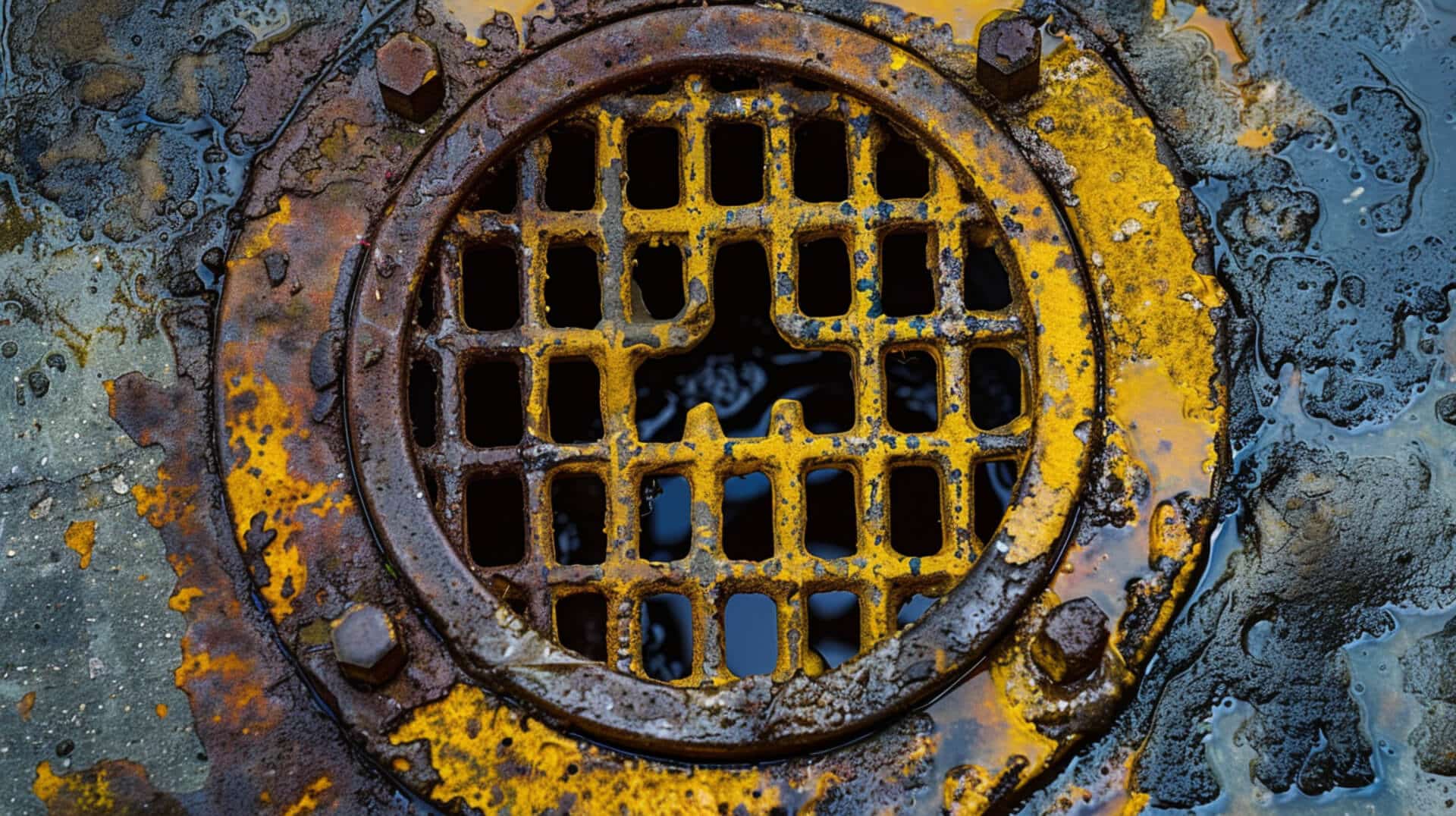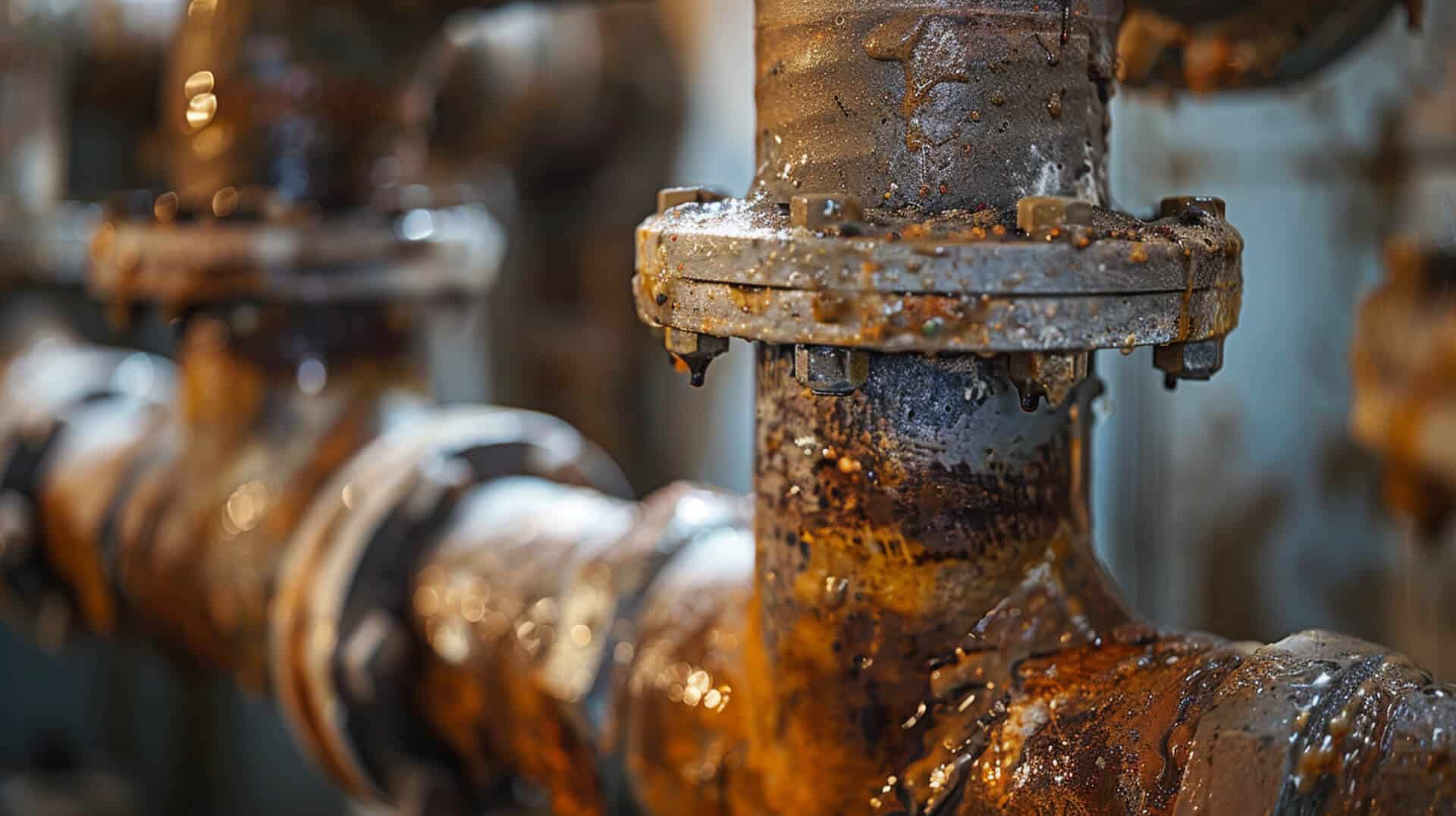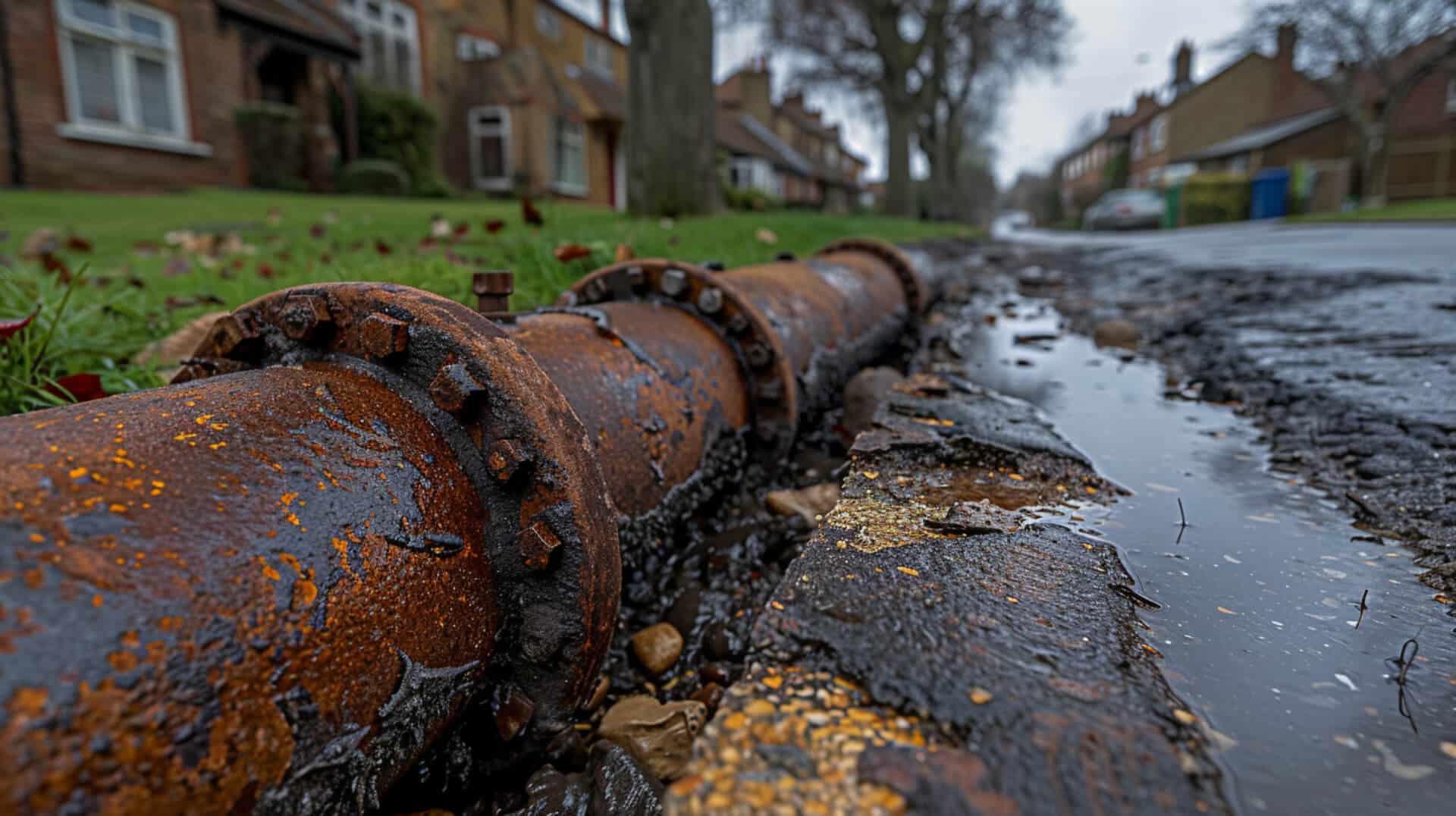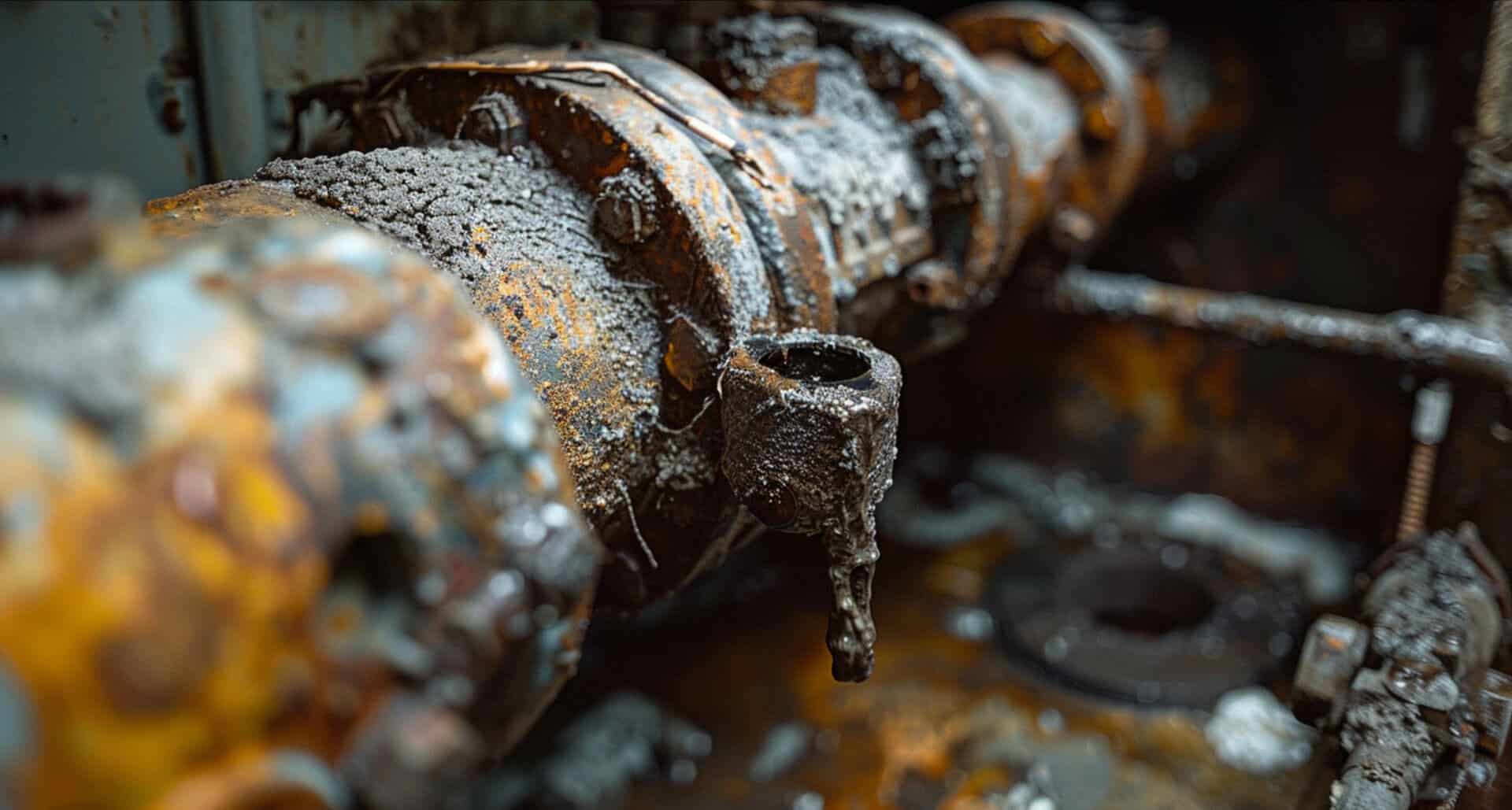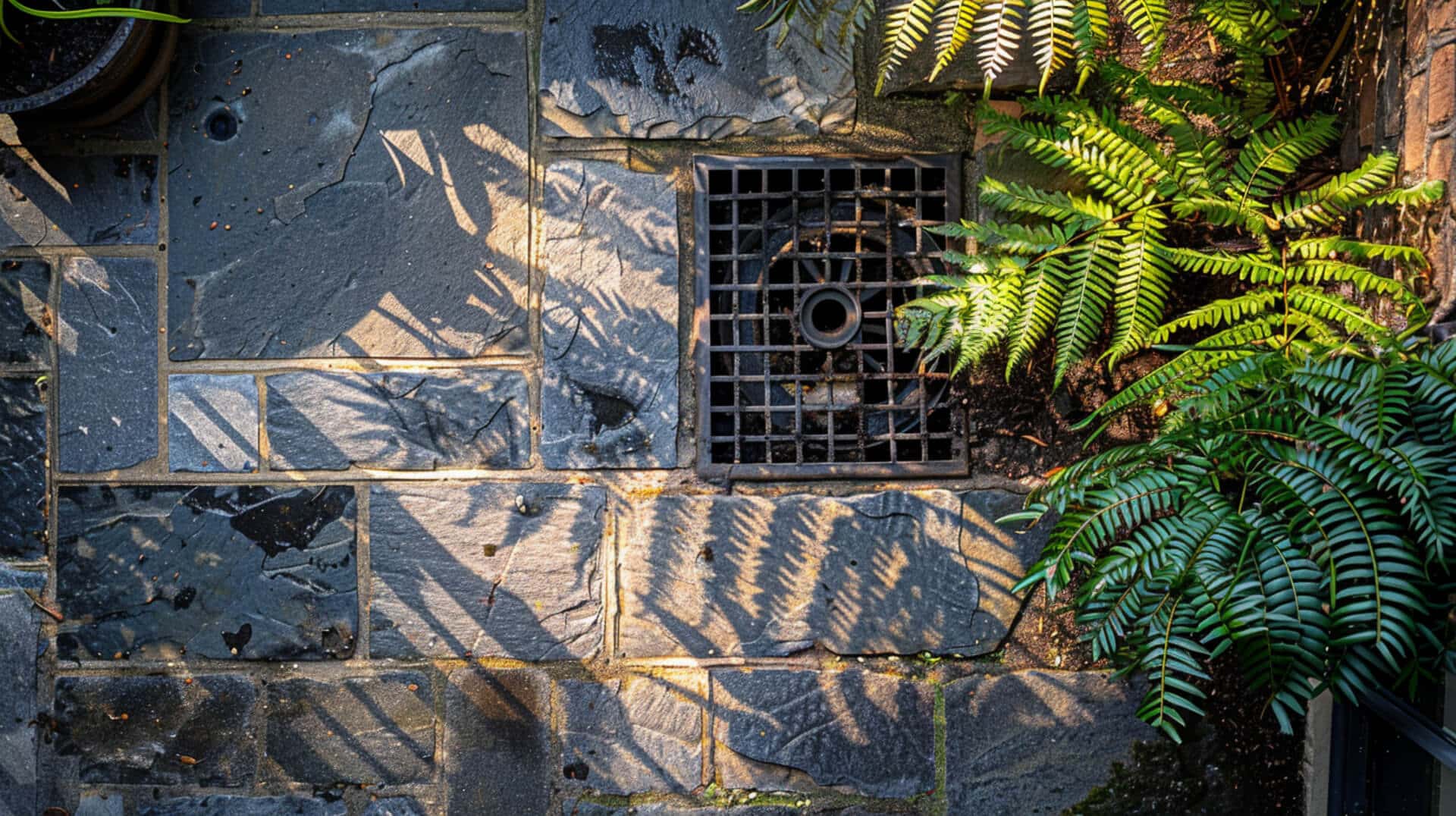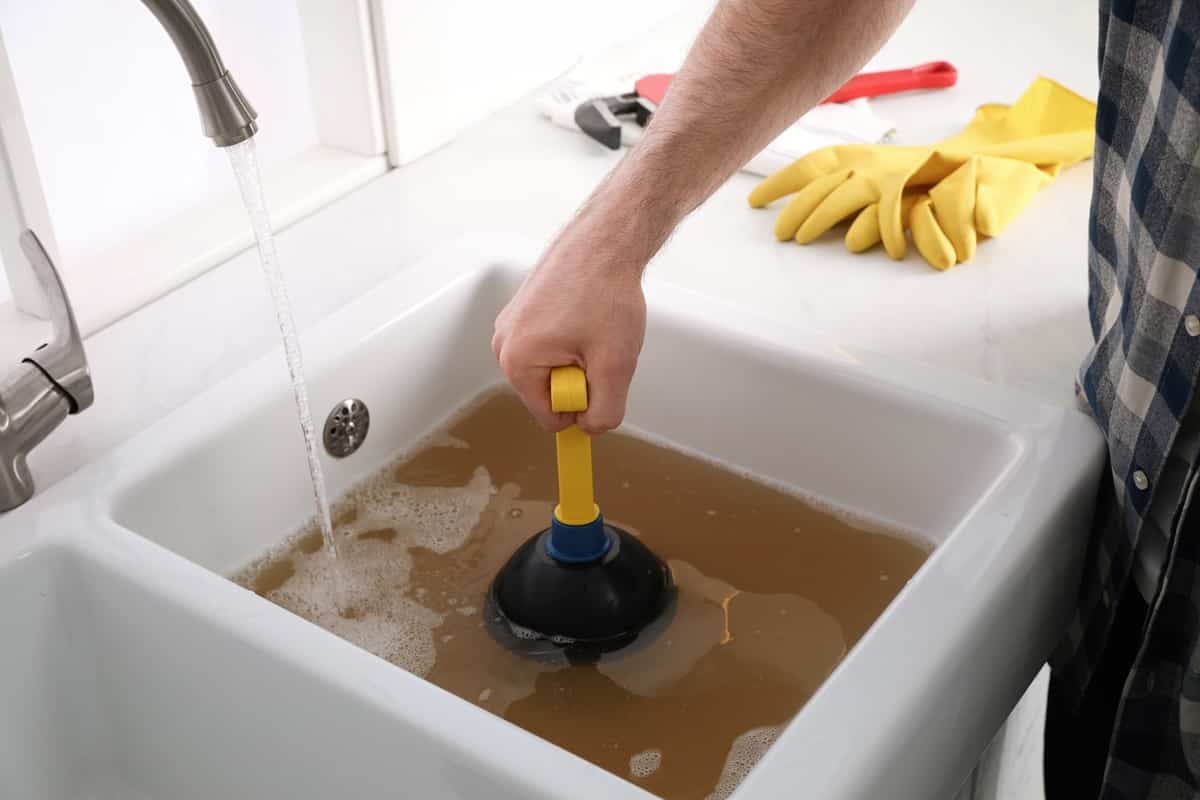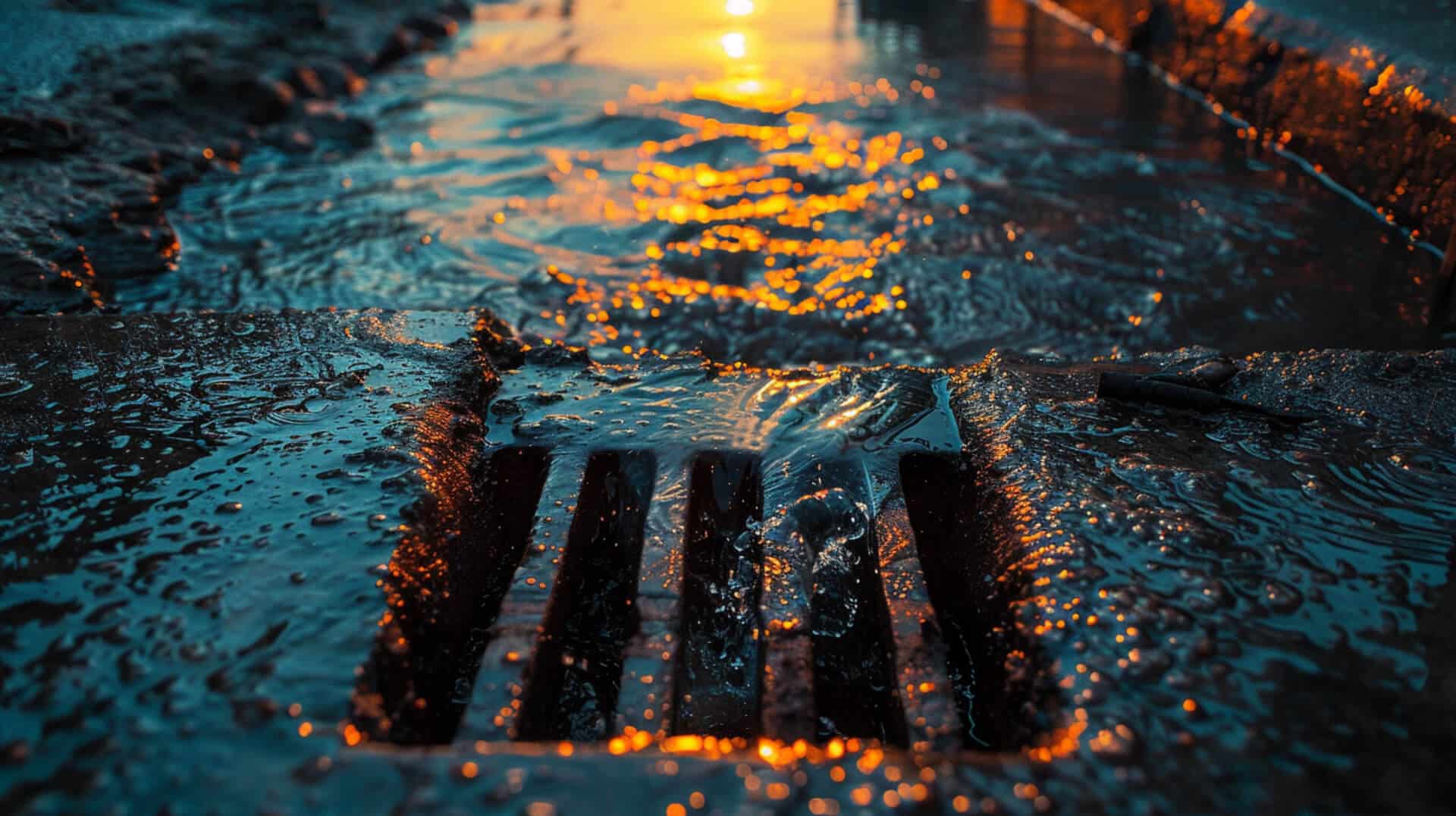 Is Rust a Common Cause of Blocked Drains?
Is Rust a Common Cause of Blocked Drains?
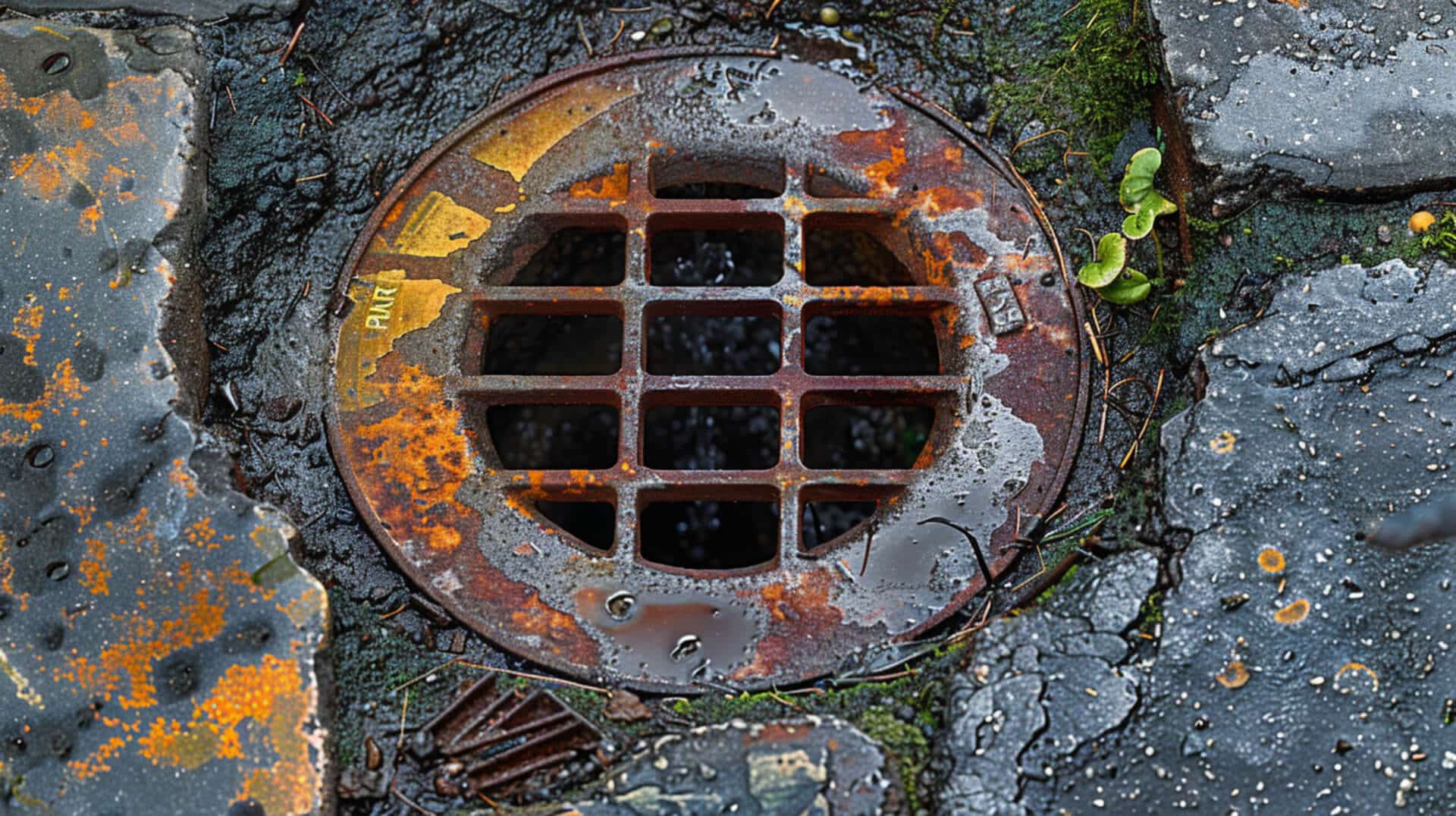
What Are Common Causes of Blocked Drains – Rust?
Blocked drains are a common issue that can cause significant inconvenience and potential damage to properties. One of the primary causes of blocked drains is rust. Understanding rust and its formation in drainage systems is essential for effective prevention and maintenance.
What is Rust and How Does it Form in Drainage Systems?
Rust is a form of iron oxide that occurs when iron or steel pipes corrode due to prolonged exposure to water and oxygen. This chemical reaction, known as oxidation, leads to the formation of reddish-brown flakes that can accumulate within the pipes.
Why is Rust a Significant Cause of Blocked Drains?
Rust buildup can narrow the diameter of pipes, reducing water flow and eventually leading to blockages. The accumulation of rust particles can also interact with other debris, such as hair and grease, exacerbating the blockage.
What Will This Guide Cover Regarding Rust in Blocked Drains?
This guide will explore the following aspects related to rust in blocked drains:
- The chemical processes leading to rust formation in pipes.
- Environmental factors contributing to rust in drainage systems.
- The impact of rust on the functionality of drainage systems.
- Preventive measures and maintenance practices to avoid rust formation.
- Technological solutions for rust removal and treatment.
How Does Rust Impact the Functionality of Drainage Systems?
Rust can significantly degrade the integrity of drainage pipes, leading to reduced water flow, potential leaks, and even pipe bursts. The presence of rust can also affect water quality, causing discoloration and unpleasant odours. Regular maintenance and timely intervention are crucial to mitigate these issues and ensure the efficient operation of drainage systems.
Understanding Rust Formation in Drainage Pipes
Rust formation in drainage pipes is a common issue that can lead to significant blockages and damage. Understanding the chemical processes, environmental factors, and material susceptibilities is crucial for effective prevention and maintenance.
Chemical Processes Leading to Rust Formation
Rust, scientifically known as iron oxide, forms through a chemical reaction called oxidation. This process occurs when iron or steel pipes are exposed to water and oxygen. The reaction can be summarised as follows:
- Oxidation Reaction: Iron (Fe) reacts with oxygen (O) in the presence of water (HO) to form iron oxide (FeO).
Environmental Factors Contributing to Rust
Several environmental factors can accelerate the rusting process in drainage systems:
- Moisture: Constant exposure to water is the primary catalyst for rust formation.
- Oxygen: The presence of oxygen in water or air facilitates the oxidation process.
- Temperature: Higher temperatures can increase the rate of chemical reactions, including oxidation.
- pH Levels: Acidic conditions (low pH) can accelerate rust formation by increasing the corrosiveness of water.
Material Susceptibility to Rust
The material of the pipes plays a significant role in their susceptibility to rust:
- Iron and Steel: These materials are highly prone to rust due to their iron content.
- Galvanised Steel: Coated with a layer of zinc to prevent rust, but over time, the coating can wear off, leading to rust formation.
- Copper and PVC: These materials are resistant to rust and are often used as alternatives to iron and steel pipes.
Common Sources of Moisture
Moisture is a critical factor in rust formation. Common sources include:
- Leaking Pipes: Even small leaks can provide a continuous source of moisture.
- Condensation: Temperature differences can cause condensation on pipes, leading to moisture accumulation.
- Flooding: Water from flooding can seep into drainage systems, accelerating rust formation.
Understanding these factors can help in implementing effective preventive measures and maintenance practices to mitigate rust-related issues in drainage systems.
How Rust Causes Blocked Drains
Rust accumulation in drainage pipes can lead to significant blockages and damage. Understanding the mechanisms by which rust forms and interacts with other debris is essential for effective prevention and maintenance.
Rust Accumulation Leading to Blockages
Rust, or iron oxide, forms when iron or steel pipes are exposed to water and oxygen. Over time, rust particles accumulate inside the pipes, narrowing the diameter and restricting water flow. This gradual buildup can eventually lead to complete blockages.
Mechanisms of Pipe Degradation
Rust degrades pipe integrity through several mechanisms:
- Corrosion: Rust weakens the structural integrity of pipes, making them more susceptible to leaks and bursts.
- Erosion: Continuous water flow can erode rust particles, further degrading the pipe’s surface.
- Pitting: Localised corrosion can create small holes or pits in the pipe, leading to leaks and potential blockages.
Interaction with Other Debris
Rust interacts with other common causes of blockages, exacerbating the problem:
- Hair and Soap Scum: Rust particles can trap hair and soap scum, creating larger blockages.
- Grease and Fat: Grease and fat can adhere to rust particles, solidifying and causing severe clogs.
- Foreign Objects: Non-flushable items can become lodged in rust-affected areas, leading to blockages.
Stages of Rust Development
Rust development in drainage systems occurs in stages:
- Initial Oxidation: Iron reacts with oxygen and water, forming iron oxide.
- Rust Accumulation: Rust particles begin to accumulate, narrowing the pipe’s diameter.
- Advanced Corrosion: Rust weakens the pipe, leading to potential leaks and structural damage.
- Complete Blockage: Accumulated rust and debris cause a full blockage, preventing water flow.
Understanding these stages and mechanisms can help in implementing effective preventive measures and maintenance practices to mitigate rust-related issues in drainage systems.
Identifying Signs of Rust in Drainage Systems
Recognising the signs of rust in drainage systems is essential for timely intervention and maintenance. Rust can significantly impact the efficiency and safety of your plumbing.
Visual Indicators of Rust in Pipes
Rust in pipes can be identified through several visual indicators:
- Reddish-Brown Stains: Rust often appears as reddish-brown stains around drains, faucets, and pipe joints.
- Flaking and Peeling: Rust can cause the surface of metal pipes to flake and peel, revealing corroded areas.
- Discoloration: Water discoloration, particularly a reddish or brownish tint, is a common sign of rust.
Changes in Water Quality
Rust can affect water quality in noticeable ways:
- Metallic Taste: A metallic taste in the water can indicate the presence of rust.
- Cloudiness: Rust particles can cause water to appear cloudy or murky.
- Sediment: Visible sediment or rust flakes in the water are clear indicators of rust in the pipes.
Odours Associated with Rust
Rust in drainage systems can produce distinct odours:
- Metallic Smell: A metallic or iron-like smell in the water is a common sign of rust.
- Musty Odour: Rust can contribute to a musty or stale odour in the water, especially if combined with other contaminants.
Impact on Water Flow and Drainage Efficiency
Rust can significantly affect water flow and drainage efficiency:
- Reduced Water Pressure: Rust buildup can narrow the pipe diameter, leading to reduced water pressure.
- Slow Drainage: Accumulated rust can cause slow drainage in sinks, bathtubs, and showers.
- Frequent Clogs: Rust particles can combine with other debris, leading to frequent clogs and blockages.
Identifying these signs early can help in taking preventive measures and seeking professional assistance to address rust-related issues in drainage systems.
Preventive Measures Against Rust in Drains
Implementing preventive measures can significantly reduce the risk of rust formation in drainage systems. Regular maintenance, the use of rust-resistant materials, protective coatings, and water softening are effective strategies.
Regular Maintenance Practices
Regular maintenance is essential to prevent rust formation in drainage systems. Key practices include:
- Routine Inspections: Conduct regular inspections to identify early signs of rust and address them promptly.
- Cleaning: Regularly clean pipes to remove debris and prevent rust buildup.
- Leak Repairs: Fix leaks immediately to prevent continuous exposure to moisture, which accelerates rust formation.
Use of Rust-Resistant Materials
Using rust-resistant materials in drainage systems can prevent rust formation:
- PVC Pipes: Polyvinyl chloride (PVC) pipes are resistant to rust and corrosion.
- Copper Pipes: Copper is naturally resistant to rust and is a durable alternative to iron and steel.
- Stainless Steel: Stainless steel pipes contain chromium, which forms a protective layer against rust.
Effective Protective Coatings
Applying protective coatings to pipes can prevent rust:
- Epoxy Coatings: Epoxy coatings create a barrier between the metal and moisture, preventing rust.
- Galvanization: Galvanised pipes are coated with zinc, which protects against rust.
- Bituminous Coatings: Bituminous coatings are used for underground pipes to prevent rust and corrosion.
Water Softening
Water softening can help in preventing rust by reducing mineral deposits:
- Water Softeners: Instal water softeners to reduce the hardness of water, which can contribute to rust formation.
- Regular Maintenance: Maintain water softeners to ensure they function effectively and prevent mineral buildup.
By implementing these preventive measures, property owners can significantly reduce the risk of rust formation in their drainage systems, ensuring long-term efficiency and safety.
Routine Inspections and Maintenance
Regular inspections and maintenance are essential to prevent rust formation in drainage systems. This section outlines the frequency of inspections, tools and technologies used for rust detection, the role of professional inspections, and the benefits of regular maintenance.
Frequency of Inspections
Drainage systems should be inspected regularly to identify and address rust issues early. Recommended inspection intervals include:
- Residential Properties: Inspect drainage systems annually.
- Commercial Properties: Conduct inspections biannually or quarterly, depending on usage and environmental conditions.
- High-Risk Areas: Areas prone to moisture or with older plumbing systems may require more frequent inspections.
Tools and Technologies for Rust Detection
Several tools and technologies are used to detect rust in drainage systems:
- CCTV Drain Surveys: Closed-circuit television (CCTV) cameras provide a live video feed, allowing for a detailed inspection of the interior of pipes.
- Moisture Metres: These devices measure the moisture content in and around pipes, helping to identify areas at risk of rust formation.
- Pipe Scanners: Advanced scanners can detect corrosion and rust buildup within pipes without invasive procedures.
Professional Inspections for Early Rust Detection
Professional inspections offer several advantages in detecting rust early:
- Expertise: Trained professionals can identify subtle signs of rust that may be missed during routine checks.
- Advanced Equipment: Professionals use specialised tools and technologies for thorough inspections.
- Comprehensive Reports: Detailed inspection reports provide a clear understanding of the condition of the drainage system and recommended actions.
Benefits of Regular Maintenance
Regular maintenance helps prevent rust and ensures the longevity of drainage systems:
- Early Detection: Identifying rust early allows for timely intervention, preventing severe blockages and damage.
- Cost Savings: Regular maintenance reduces the need for costly repairs and replacements.
- Improved Efficiency: Well-maintained drainage systems operate more efficiently, reducing the risk of clogs and slow drainage.
- Safety: Regular maintenance ensures the safety and reliability of the plumbing system, preventing potential health hazards.
Implementing routine inspections and maintenance practices can significantly reduce the risk of rust formation and ensure the long-term functionality of drainage systems.
Technological Solutions for Rust Removal
Addressing rust in drainage systems requires effective technological solutions. This section explores high-pressure water jetting, chemical treatments, snake drain augers, and pipe relining techniques.
High-Pressure Water Jetting
High-pressure water jetting is a method used to remove rust and other debris from pipes. It involves the use of a high-pressure water jet to blast away rust particles, effectively cleaning the interior of the pipes.
- Mechanism: A specialised nozzle directs high-pressure water into the pipe, dislodging rust and flushing it out.
- Advantages: This method is highly effective for removing stubborn rust and other blockages without damaging the pipe structure.
Chemical Treatments
Chemical treatments involve the use of specific chemicals designed to dissolve rust and prevent further corrosion.
- Mechanism: Rust removers, often containing phosphoric acid or other rust-dissolving agents, are introduced into the pipes to break down rust particles.
- Advantages: Chemical treatments can be effective for minor rust buildup and are often used in combination with other methods for comprehensive cleaning.
Snake Drain Augers
Snake drain augers are mechanical tools used to break down and remove clogs, including rust buildup, from pipes.
- Mechanism: A flexible, coiled metal wire is inserted into the pipe and rotated to break up rust and other debris.
- Advantages: Snake drain augers are effective for reaching and removing localised rust blockages, especially in smaller pipes.
Pipe Relining Techniques
Pipe relining is a trenchless repair method that involves inserting a new lining into the existing pipe to address rust and other damage.
- Mechanism: A resin-coated liner is inserted into the damaged pipe and then inflated to adhere to the pipe’s interior, creating a new, rust-resistant surface.
- Advantages: Pipe relining is a long-term solution that not only addresses existing rust but also prevents future corrosion, extending the lifespan of the drainage system.
These technological solutions provide effective methods for removing rust and maintaining the integrity of drainage systems.
Health and Safety Implications of Rust in Drains
Rust in drainage systems can pose significant health and safety risks. Understanding these implications is crucial for maintaining a safe and efficient plumbing system.
Health Risks Associated with Rust in Drainage Systems
Rust in drainage systems can lead to several health risks:
- Contaminated Water: Rust particles can contaminate drinking water, leading to potential health issues.
- Bacterial Growth: Rust provides a conducive environment for bacteria to thrive, increasing the risk of waterborne diseases.
- Allergic Reactions: Some individuals may experience allergic reactions to rust particles in the water.
Contribution of Rust to Bacterial Growth in Pipes
Rust can significantly contribute to bacterial growth in pipes:
- Surface Area: Rust increases the surface area within pipes, providing more space for bacteria to adhere and multiply.
- Nutrient Source: Rust particles can act as a nutrient source for certain types of bacteria, promoting their growth.
- Biofilm Formation: Bacteria can form biofilms on rusted surfaces, making them more resistant to cleaning and disinfection.
Safety Measures During Rust Removal
Several safety measures should be taken during rust removal to ensure the safety of individuals and the integrity of the plumbing system:
- Protective Gear: Use protective gloves, masks, and eyewear to prevent direct contact with rust particles and chemicals.
- Ventilation: Ensure proper ventilation when using chemical treatments to avoid inhaling fumes.
- Proper Disposal: Dispose of rust particles and chemical residues according to local regulations to prevent environmental contamination.
Impact of Rust on Overall Property Safety
Rust in pipes can affect the overall safety of a property in several ways:
- Structural Damage: Rust can weaken pipes, leading to leaks, bursts, and potential water damage to the property.
- Fire Hazard: In some cases, rust can compromise the integrity of metal pipes used in fire suppression systems, posing a fire hazard.
- Water Quality: Rust can degrade water quality, making it unsafe for consumption and use.
Understanding these health and safety implications is essential for maintaining a safe and efficient drainage system. Regular inspections and maintenance can help mitigate these risks.
Cost Considerations for Rust Prevention and Removal
Understanding the costs associated with rust prevention and removal in drainage systems is essential for effective budgeting and maintenance planning. This section outlines the expenses related to preventive measures, rust removal, pipe replacement, and the long-term financial benefits of regular maintenance.
Costs Associated with Preventive Measures Against Rust
Preventive measures can help avoid costly repairs and replacements. Common preventive measures and their associated costs include:
- Routine Inspections: Regular inspections can range from 50 to 200, depending on the property’s size and complexity.
- Protective Coatings: Applying protective coatings, such as epoxy or bituminous coatings, can cost between 5 and 15 per square metre.
- Water Softeners: Installing a water softener system can range from 300 to 1,000, with additional maintenance costs.
Cost Comparison of Rust Removal and Pipe Replacement
The costs of rust removal and pipe replacement can vary significantly:
- Rust Removal: Professional rust removal services, including high-pressure water jetting and chemical treatments, can cost between 100 and 500, depending on the severity of the rust buildup.
- Pipe Replacement: Replacing rusted pipes can be more expensive, ranging from 1,000 to 5,000, depending on the length and material of the pipes.
Long-Term Financial Benefits of Regular Maintenance
Regular maintenance can provide substantial long-term financial benefits:
- Cost Savings: Preventive maintenance reduces the need for costly emergency repairs and replacements.
- Extended Lifespan: Regular maintenance extends the lifespan of drainage systems, delaying the need for expensive replacements.
- Improved Efficiency: Well-maintained systems operate more efficiently, reducing water and energy costs.
Budgeting for Rust-Related Drainage Issues
Property owners can budget for rust-related drainage issues by considering the following:
- Annual Maintenance Budget: Allocate a portion of the annual maintenance budget for routine inspections and preventive measures.
- Emergency Fund: Set aside an emergency fund to cover unexpected rust-related repairs and replacements.
- Cost-Benefit Analysis: Conduct a cost-benefit analysis to determine the most cost-effective preventive measures and maintenance practices.
By understanding these cost considerations, property owners can effectively budget for rust prevention and removal, ensuring the long-term efficiency and safety of their drainage systems.
Impact of Rust on Environmental Sustainability
Rust in drainage systems can have significant environmental implications. Understanding these impacts and adopting eco-friendly solutions is essential for sustainable plumbing practices.
Environmental Effects of Rust in Drainage Systems
Rust in drainage systems can lead to several environmental issues:
- Water Contamination: Rust particles can contaminate water sources, affecting aquatic life and water quality.
- Soil Degradation: Leaks from rusted pipes can lead to soil contamination, impacting plant growth and soil health.
- Increased Waste: Replacing rusted pipes generates waste, contributing to landfill and environmental pollution.
Eco-Friendly Solutions for Rust Prevention
Several eco-friendly solutions can help prevent rust in drainage systems:
- Rust-Resistant Materials: Using materials like PVC and copper, which are resistant to rust, can reduce environmental impact.
- Protective Coatings: Applying non-toxic, eco-friendly coatings to pipes can prevent rust without harming the environment.
- Water Softening: Installing water softeners can reduce mineral deposits that contribute to rust formation.
Sustainable Plumbing Practices
Adopting sustainable plumbing practices can help reduce rust formation and its environmental impact:
- Regular Maintenance: Conducting regular inspections and maintenance can prevent rust and extend the lifespan of pipes.
- Leak Prevention: Fixing leaks promptly reduces water waste and prevents rust-related damage.
- Efficient Water Use: Implementing water-saving fixtures and practices can reduce the strain on drainage systems and prevent rust.
Environmental Benefits of Eco-Friendly Drain Cleaners
Using eco-friendly drain cleaners offers several environmental benefits:
- Biodegradable Ingredients: Eco-friendly cleaners use biodegradable ingredients that break down naturally, reducing environmental pollution.
- Non-Toxic Formulas: These cleaners are free from harsh chemicals, making them safer for the environment and human health.
- Reduced Chemical Runoff: Using eco-friendly cleaners reduces the risk of chemical runoff into water sources, protecting aquatic ecosystems.
By understanding the environmental impact of rust and adopting sustainable practices, property owners can contribute to environmental sustainability while maintaining efficient drainage systems.
Challenges in Managing Rust in Drainage Systems
Managing rust in drainage systems presents several challenges. Understanding these challenges and how to overcome them is essential for maintaining efficient and safe plumbing systems.
Common Challenges in Rust Prevention
Preventing rust in drainage systems involves addressing several common challenges:
- Constant Exposure to Moisture: Pipes are continuously exposed to water, making it difficult to prevent rust formation.
- Material Susceptibility: Iron and steel pipes are inherently prone to rust, requiring more frequent maintenance.
- Environmental Factors: Factors such as humidity, temperature fluctuations, and water pH levels can accelerate rust formation.
Overcoming Obstacles in Rust Management
Property owners can take several steps to overcome obstacles in rust management:
- Regular Inspections: Conducting routine inspections helps identify early signs of rust and address them promptly.
- Use of Rust-Resistant Materials: Replacing iron and steel pipes with rust-resistant materials like PVC or copper can reduce rust formation.
- Protective Coatings: Applying protective coatings to pipes can create a barrier against moisture and prevent rust.
Limitations of Current Rust Removal Technologies
Current rust removal technologies have certain limitations:
- Chemical Treatments: While effective, chemical treatments may not reach all areas of the pipe and can be harmful if not used correctly.
- Mechanical Methods: Techniques like high-pressure water jetting and snake drain augers may not completely remove rust, especially in heavily corroded pipes.
- Cost and Accessibility: Advanced rust removal technologies can be expensive and may not be readily available in all areas.
Importance of Continuous Education and Training
Continuous education and training are crucial for effective rust management:
- Up-to-Date Knowledge: Staying informed about the latest rust prevention and removal techniques helps in implementing the most effective solutions.
- Professional Training: Ensuring that maintenance personnel are well-trained in rust management techniques can improve the effectiveness of preventive measures and treatments.
- Awareness Programmes: Educating property owners about the importance of rust prevention and maintenance can lead to more proactive management practices.
By understanding and addressing these challenges, property owners can effectively manage rust in their drainage systems, ensuring long-term efficiency and safety.
Key Takeaways from Rust in Blocked Drains
Understanding the impact of rust on drainage systems is crucial for maintaining efficient and safe plumbing. This guide has covered various aspects of rust formation, prevention, and management.
Implementing Preventive Measures
Property owners can implement several preventive measures to reduce the risk of rust in drainage systems:
- Regular Inspections: Conduct routine inspections to identify early signs of rust and address them promptly.
- Use of Rust-Resistant Materials: Opt for materials like PVC, copper, or stainless steel, which are less prone to rust.
- Protective Coatings: Apply protective coatings to pipes to create a barrier against moisture and prevent rust formation.
- Water Softening: Instal water softeners to reduce mineral deposits that contribute to rust.
Importance of Addressing Rust Issues Promptly
Addressing rust issues promptly is essential for several reasons:
- Preventing Blockages: Early intervention can prevent rust from accumulating and causing blockages.
- Maintaining Water Quality: Preventing rust ensures that water quality remains safe for consumption and use.
- Avoiding Structural Damage: Timely maintenance can prevent rust from weakening pipes and causing leaks or bursts.
- Cost Savings: Early detection and prevention reduce the need for costly repairs and replacements.
Future Advancements in Rust Management Technologies
Advancements in rust management technologies are expected to improve the efficiency and effectiveness of rust prevention and removal:
- Enhanced Detection Tools: Development of more advanced tools for early detection of rust, such as improved CCTV drain surveys and pipe scanners.
- Innovative Coatings: Research into new protective coatings that offer longer-lasting protection against rust.
- Eco-Friendly Solutions: Increased focus on eco-friendly rust removal and prevention methods that minimise environmental impact.
- Automated Maintenance Systems: Implementation of automated systems for continuous monitoring and maintenance of drainage systems to prevent rust formation.
By understanding these key takeaways and implementing the discussed preventive measures, property owners can ensure the long-term efficiency and safety of their drainage systems.
